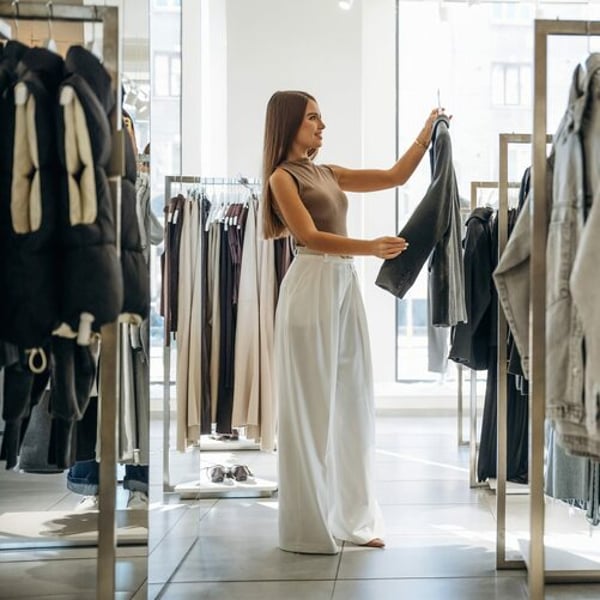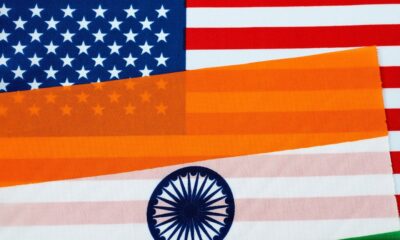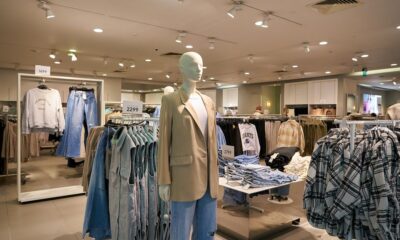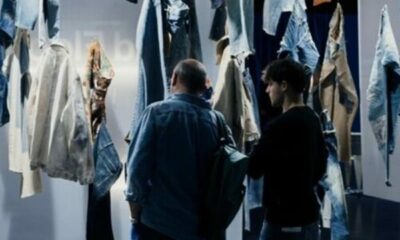Fashion
UK discretionary retail sales tepid but fashion is stronger

Published
October 3, 2025
UK retailers saw moderate discretionary sales growth ahead of the key Golden Quarter trading period in September, BDO’s High Street sales Tracker (HSST) showed on Friday.
Total like-for-like (LFL) retail sales in-store and online grew by 3.1% — less than 4.7% seen this time last year but not disastrous even though discretionary spend growth remains below inflation meaning sales volumes are down.
In-store sales were the drivers this time as physical stores saw sales growth of 3.7% year on year. This was one of the highest figures so far this year and follows on from August’s positive performance when in-store sales grew at their highest rate in two years.
However, sales online grew by just 3% in September, compared to a very strong base of an 11.6% rise in September 2024.
The discretionary categories BDO tracks are fashion, homewares and lifestyle and fashion outperformed. Total LFL retail sales in the sector grew by 4%, with in-store LFL sales growing by 6.4%.
Sophie Michael, Head of Retail and Wholesale at BDO, said: “These results will be seen as a positive trend as we move into the critical golden quarter, particularly given the exceptionally tough economic backdrop.
“However, the timing of the Budget, two days before Black Friday, could have significant implications for the retail sector. Retailers were caught out last year with the higher-than-expected [National Insurance] hikes combined with the impact that the Budget had on consumer confidence. There is no doubt that investment decisions are being deferred even further as businesses await the forthcoming Budget and understand its bearing on their short and medium term cashflows.
“Reports elsewhere also suggest that there are reduced orders being placed with suppliers as retailers fret over the level of spending. At the same time, consumers will be approaching their spending choices with caution; the speculation and noise around the Chancellor’s Budget may cause the shopper to tighten their belts. Depending on the outcome, December will be critical to the Christmas trading results.”
Copyright © 2025 FashionNetwork.com All rights reserved.
Fashion
Will India-US trade deal shake up Asia’s apparel export dynamics?

India and the US are close to sealing a landmark trade deal that could ease the steep tariffs imposed by Washington earlier this year, as other Asian apparel export hubs keep a keen eye on the developments.
At a recent White House event, President Donald Trump struck an optimistic tone, noting that Washington and New Delhi were “getting close” to finalising a fair-trade deal.
Source link
Fashion
Australia’s jobless rate eases to 4.3% in October: ABS

The number of unemployed people fell by 17,000, while employment expanded by 42,000. More jobseekers moved directly into employment than is typical for October, lifting full-time employment sharply by 55,000. Both women and men contributed to these gains, with female full-time employment rising by 29,000 and male full-time employment by 26,000, ABS said in a press release.
Australia’s unemployment rate fell to 4.3 per cent in October as 42,000 people gained jobs and unemployment dropped by 17,000.
Strong full-time growth, especially among women, outweighed a fall in part-time roles.
Participation held at 67 per cent, while hours worked rose 0.5 per cent.
Underemployment edged down to 5.7 per cent.
Trend unemployment rate stood at 4.4 per cent.
Part-time employment fell by 13,000, driven primarily by a 21,000 drop among women, partly offset by an 8,000 rise among men. The participation rate held steady at 67 per cent overall, although it diverged by gender: male participation increased to 71 per cent, while female participation slipped to 63.1 per cent. The employment-to-population ratio remained stable at 64 per cent.
Hours worked rose by 0.5 per cent—outpacing the rise in employment—indicating stronger labour demand and fewer people working reduced hours. The underemployment rate dropped to 5.7 per cent, down 0.2 percentage points for the month and 0.5 percentage points from a year earlier. Combined with lower unemployment, the underutilisation rate dipped to 10.0 per cent, continuing its steady improvement since 2020.
Trend data reaffirmed this resilience, with trend unemployment holding at 4.4 per cent. Trend unemployment is the jobless rate shown without short-term fluctuations, giving a clearer picture of the labour market’s real direction.
Trend employment grew by 27,000 (0.2 per cent) in October and 1.5 per cent over the year. Monthly hours worked rose by 0.1 per cent in trend terms, slightly lagging employment growth but remaining broadly consistent with long-term patterns. Trend participation edged up to 67 per cent, while the employment-to-population ratio stayed at 64 per cent. The trend underemployment and underutilisation rates were steady at 5.8 per cent and 10.1 per cent respectively, added the release.
Fibre2Fashion News Desk (SG)
Fashion
Pinterest appoints Beth Horn to lead Western and Southern Europe

Published
November 18, 2025
Pinterest’s operations in the UK, Ireland, France, Italy, and Spain have been entrusted to Beth Horn, who has been appointed as the social network’s Vice-President for Southern Europe.
Beth Horn previously served as business director for the UK market. She joined Pinterest in June 2024, having earlier served as director of sales at Spotify, and she spent twelve years at Meta, where she held director roles across industry, retail, and commerce.
“As we step up our international efforts, Beth will draw on her extensive experience to advance our strategy,” said Cécile van Steenberge, the company’s international vice-president. “Her proven ability to bring teams together and deliver results for our advertising partners puts us in an ideal position for the next stage of our growth. For the ninth consecutive quarter, our audience continues to grow. We will remain committed to showcasing what makes Pinterest unique to brands and attracting them to the platform.”
The group says the appointment comes after a 41% jump in revenue. In the third quarter, nearly 83% of users of the inspiration-focused social network were outside the US.
Launched in 2010 in San Francisco, Pinterest now claims half a billion monthly active users. Two years ago, the group launched a charm offensive aimed at luxury brands, highlighting its young, affluent audience.
This article is an automatic translation.
Click here to read the original article.
Copyright © 2025 FashionNetwork.com All rights reserved.
-

 Tech1 week ago
Tech1 week agoFrom waste to asset: Turning ethanol production CO₂ into jet fuel
-

 Tech3 days ago
Tech3 days agoNew carbon capture method uses water and pressure to remove CO₂ from emissions at half current costs
-

 Politics5 days ago
Politics5 days agoBritish-Pakistani honoured for transforming UK halal meat industry
-

 Sports3 days ago
Sports3 days agoTexas A&M officer scolds South Carolina wide receiver after touchdown; department speaks out
-

 Business3 days ago
Business3 days agoThese 9 Common Money Mistakes Are Eating Your Income
-

 Tech1 week ago
Tech1 week agoSecurity flaws in portable genetic sequencers risk leaking private DNA data
-

 Sports1 week ago
Sports1 week agoSteelers vs. Chargers (Nov 9, 2025) Live Score – ESPN
-

 Fashion5 days ago
Fashion5 days agoAdidas & Patrick Mahomes expand NIL programme with Texas Tech athletes

















